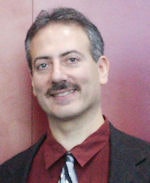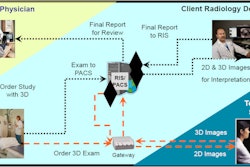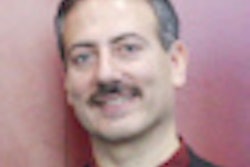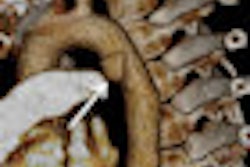
In the first of a two-part series on how to set up a 3D laboratory, AuntMinnie.com provides coverage of Dr. Eliot Siegel's suggestions on issues such as cost-effectiveness, workflow, 3D technologists, and software purchasing decisions.
3D labs can provide a major service to patients and referring clinicians, and they can also yield increased efficiency and offer a new source of financial revenue. But care must be exercised in setting up these labs, said Dr. Eliot Siegel, from the University of Maryland School of Medicine.
Creating and running successful advanced visualization and advanced quantification labs requires tackling tough issues such as setting up a billing process, determining indications for 3D studies, and developing a rigorous quality control program, he said.
 Dr. Eliot Siegel.
Dr. Eliot Siegel.Siegel shared his tips and suggestions for setting up a 3D lab for multiplanar and other advanced imaging techniques during a talk at the RSNA 2011 meeting in Chicago.
3D labs can improve workflow efficiency by centralizing image processing functions, in addition to providing financial benefits and improving surgical planning and patient care. They can also drive consistency, allowing 3D technologists to reliably create standardized views and images for referring clinicians for communicating findings and surgical planning, he said.
These labs can also provide value-added services such as aortic stent graft planning. Additionally, they can confer a marketing benefit for practices, as 3D images give the perception that a site is performing state-of-the-art imaging, he said. 3D labs can also offer educational opportunities for residents, fellows, and staff.
Major hurdles
Setting up a consistent, reliable, and cost-effective 3D imaging service requires first figuring out an appropriate staffing level (who's going to be doing the 3D imaging and processing). Next, sufficient revenue must be received to cover the costs of the service, according to Siegel.
In addition to billing generated from a 3D lab, staff time savings should be another consideration in determining the cost-effectiveness of the 3D service, Siegel said.
"If a radiologist is spending a fair amount of her or his day doing 3D processing, then they would be diverted from reading additional clinical cases, which would have an impact on the practice," he said. "Then the facility might need to hire additional radiologists or moonlighters to read the studies. Also, if you have your technologist who's doing the CT studies performing the 3D imaging between scans, that could slow down your scanner throughput and decrease revenue."
3D study processing times vary, with many complex exams such as CT angiography (CTA) requiring 45 to more than 60 minutes to process all of the associated views. Other less complicated 3D exams may have processing times of only 15 to 30 minutes, Siegel said.
"Processing time has steadily decreased as time has gone on," he said.
In another advance, CT and MRI technologist postprocessing is increasingly being taken over by "intelligent" software templates and 3D hanging protocols. This frees the 3D/advanced visualization technologist to perform increasingly more advanced processing and analysis without having to do mundane processing and visualization, Siegel said.
"There are [advanced visualization] vendors that are implementing advanced workflow templates," he said. "For example, for cardiac imaging, you would pick a cardiac template; the software could potentially label the vasculature and then isolate the vessels and actually produce plots of patient stenosis."
This allows for an iterative process that begins with the computer performing basic processing with a template. Taking into account the pathology, the 3D technologist then does initial processing, after which the radiologist or clinician can go ahead and examine the potential pathology identified by the technologist, Siegel said.
Dedicated 3D techs
A dedicated advanced visualization technologist has traditionally been an experienced, trained CT or MR technologist who can work closely with the radiologists and referring physicians, he said.
"In many ways, the dedicated 3D tech can be thought of as a computer graphics medical artist who can take the cross-sectional scans and create beautiful, concise, anatomically detailed 3D views," Siegel said.
3D technologists must gain an in-depth understanding of cross-sectional anatomy and pathology, scan artifacts, and the operation of complex computer software. It can take three to six months to train a dedicated 3D technologist.
Training and education remain an issue for 3D technologists. There is no 3D technologist certification, and only one or two radiological sciences programs in the U.S. include 3D imaging in routine radiologic technologist training, Siegel said.
Recognition for 3D imaging skills isn't yet at a level to drive demand for 3D training programs. A 3D technologist typically has a salary about equal to that of a senior MRI or CT technologist, he said.
Spending wisely
While it might be tempting to save a few bucks by foregoing service agreement and software updates, a 3D lab is not the place to skimp, Siegel noted. In addition, several different systems might be required to be capable of processing any type of clinical exam.
"There's really no one system that's best-of-breed for all advanced visualization and quantitative examinations," he said.
3D labs also need to be able to import outside exams, Siegel added.
While today's 3D images are designed to be reviewed on a computer, quality printers can still be useful to have. Some physicians like to keep printouts of 3D images in patients' files for later reference and also to show patients.
As for determining reasonable turnaround time, Siegel noted that Stanford University's 3D laboratory aims for a two- to three-hour turnaround.
"One of the pitfalls is that, with 3D imaging, there is a great temptation to keep working on an image to create a really beautiful picture," he said. "But the techs need to remember that the job is to answer the clinical question rather than trying to achieve perfection with the images."
Part 2 of AuntMinnie.com's coverage of Dr. Siegel's talk will highlight billing aspects and more potential pitfalls.



















